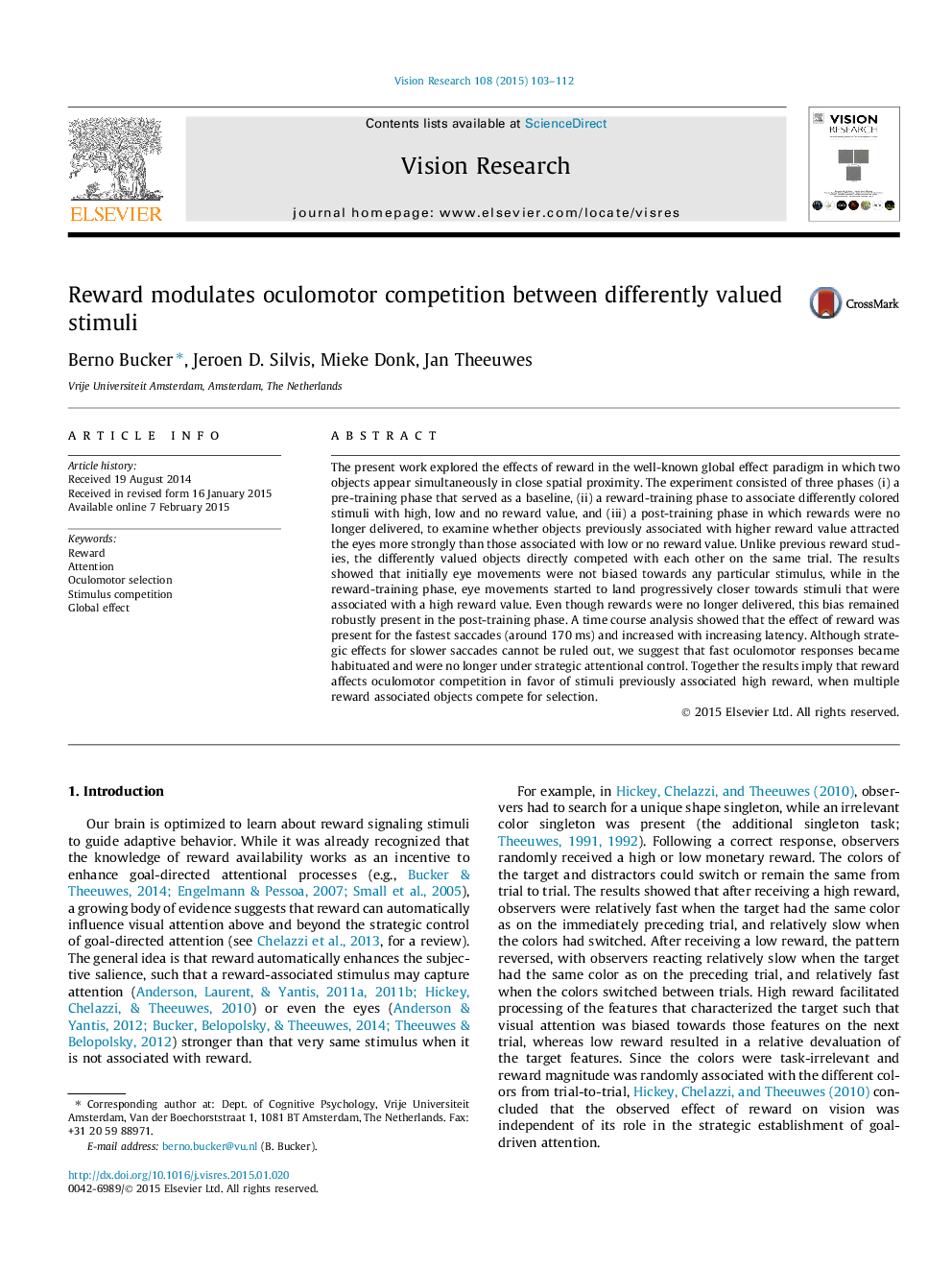| Article ID | Journal | Published Year | Pages | File Type |
|---|---|---|---|---|
| 4033700 | Vision Research | 2015 | 10 Pages |
•Reward associated objects affected saccades in the global effect paradigm.•High reward objects attracted the eyes more strongly than low and no reward objects.•The effect of reward remained present even though reward was no longer delivered.•Higher value objects gain oculomotor priority when multiple reward objects compete.•The effect of reward was already present for the fastest saccades (around 170 ms).
The present work explored the effects of reward in the well-known global effect paradigm in which two objects appear simultaneously in close spatial proximity. The experiment consisted of three phases (i) a pre-training phase that served as a baseline, (ii) a reward-training phase to associate differently colored stimuli with high, low and no reward value, and (iii) a post-training phase in which rewards were no longer delivered, to examine whether objects previously associated with higher reward value attracted the eyes more strongly than those associated with low or no reward value. Unlike previous reward studies, the differently valued objects directly competed with each other on the same trial. The results showed that initially eye movements were not biased towards any particular stimulus, while in the reward-training phase, eye movements started to land progressively closer towards stimuli that were associated with a high reward value. Even though rewards were no longer delivered, this bias remained robustly present in the post-training phase. A time course analysis showed that the effect of reward was present for the fastest saccades (around 170 ms) and increased with increasing latency. Although strategic effects for slower saccades cannot be ruled out, we suggest that fast oculomotor responses became habituated and were no longer under strategic attentional control. Together the results imply that reward affects oculomotor competition in favor of stimuli previously associated high reward, when multiple reward associated objects compete for selection.
